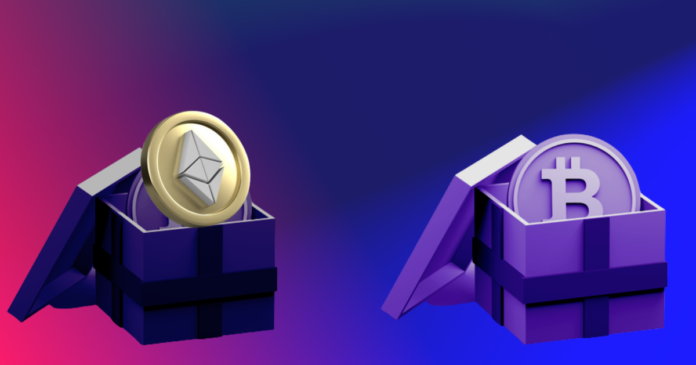Wrapped Tokens are smart contracts that stand in for the locked collateral of the primary asset (in this case, Bitcoin) on a different blockchain. They serve to boost a developing DeFi ecosystem by offering liquidity. A wrapped token is simply a tokenized version of another cryptocurrency.
Have you ever tried to use Bitcoin on Ethereum or maybe you’re trying to use Ethereum on the Binance smart chain? Well, we need to remember that cryptocurrencies created on a particular blockchain don’t necessarily work on another blockchain. So for this reason we found that many cryptocurrencies these days are coming out with what we call wrapped versions and in today’s article I’m going to be explaining exactly what a wrapped token is so you can wrap your head around it.
As I said at the beginning you might be sitting with some bitcoin and you’re wanting to buy a token that exists on the Ethereum network, or perhaps you have some Ethereum and you can’t really use it because you want to buy a token that exists where on the Binance smart chain. Well, this is where wrapped tokens come in because they seem to offer the solution to help you and me bridge that gap.
What is a Wrap token?
A wrap token is simply a tokenized version of another cryptocurrency. So if we take a digital asset like bitcoin for example what this means is that bitcoin will now be hosted on another blockchain for example Ethereum or the Binance smart chain, but it’s hosted there with a price that is the same as the underlying asset, in other words, the bitcoin that I’ve wrapped will be of the same value as the wrapped token even though it’s on a totally different blockchain.

You could actually think of rap tokens in the same way as you do stablecoins. Now remember stablecoins peg the value to another asset in their case it’s pegged to fiat currency. However, with the rap token, it’s pegged to the underlying asset if we use bitcoin and wrapped bitcoin as an example your wrapped bitcoin will be pegged back to your original bitcoin. Simply put this allows me to take my crypto for example bitcoin creates a wrapped token that can work on the Ethereum network just as an example and not only can I do that and then use that crypto on the Ethereum network but I can take advantage of the cost and speed associated with that particular blockchain.
So here’s another example we know that on the Binance smart chain it’s cheap and fast to move crypto around any way you want to. So now with the rep tokens, this allows me the facility to take my crypto creates a wrapped token that can work on the Binance smart chain, and then when I move that crypto around in the wrapped format this means now that I’m painless because I’m taking advantage of the fees on that blockchain and I’m able to move it faster as well.
Wrap tokens typically require a custodian. This is an entity that holds an equivalent amount of the asset as the wrapped amount. This custodian can be a merchant, a wallet, or even a smart contract. So in a wrapped bitcoins case, the custodian needs to hold one bitcoin for each wrapped bitcoin that is minted, proof of this reserve exists on the blockchain.
How does the wrapping process actually work?
A merchant sends bitcoin for the custodian to mint. The custodian then mints wrapped bitcoin on Ethereum according to the amount of bitcoin sent. When the wrapped bitcoin needs to be exchanged back to bitcoin the merchant puts in a burning request to the custodian and the bitcoin is released from the reserves. In wrapped bitcoin’s case adding and removing custodians and merchants is performed by a DAO.
Related: Difference Between Altcoins and Tokens Explained
So folks hoping that gives you a good clear understanding of what a rap token is and why people are using them. So for our question of the day let me know in the comments down below if you’ve ever used the wrap tokens or if you’ve taken some of your tokens and you’ve created a wrapped token I’d love to hear from you let me know in the comments.
A wrapped token is a digital asset that can operate on different blockchains and has a value linked to a specific cryptocurrency.
A wrapped Bitcoin token is secure from a technical standpoint. When converted into an ERC-20 or BEP-20 token, it will hold the security of the associated network and is likely to be held in custody on secure platforms like Ethereum or Binance Smart Chain.
Most of the time, a user can wrap and unwrap a given token whenever they like all they have to do is return the token for the underlying asset.

